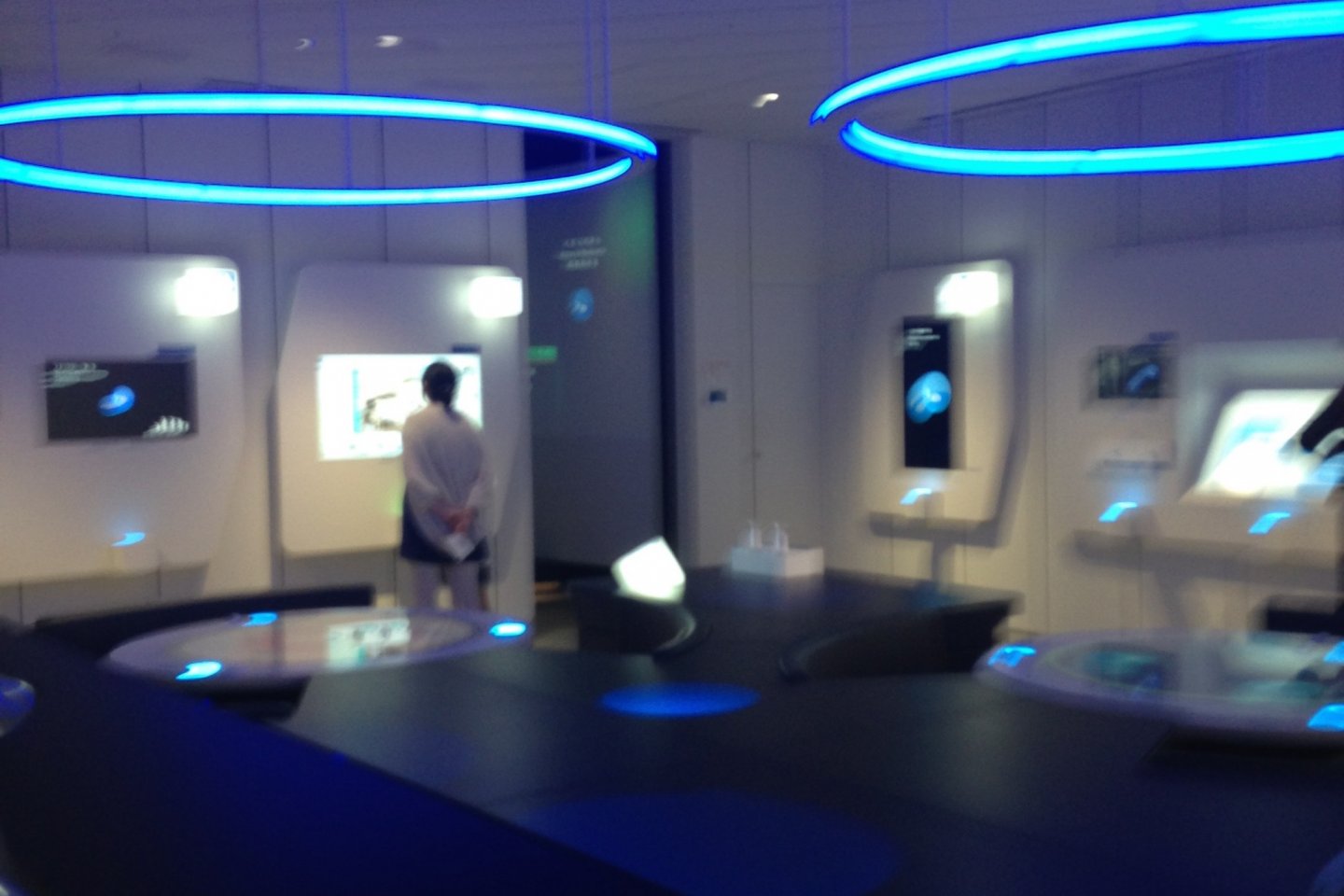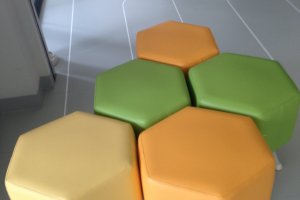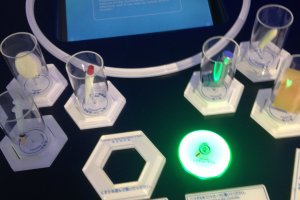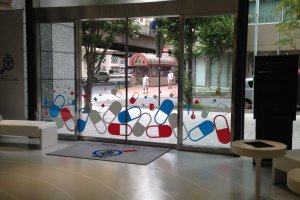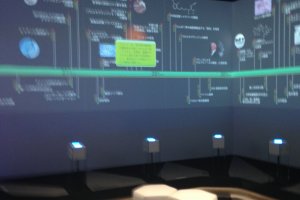I have taken four biology classes in my life and have never liked any of them. So I was surprised that when I stepped into the Daiichi Sankyo medicine museum in Nihonbashi, I knew immediately that I wouldn’t want to leave. The lobby is bright and white and clean, as one who has never been in a lab might imagine it would be— it feels new and innovative from the get-go. The seats are clever: these multi-colored, pentagonal leather stools resemble chemical compounds. An interactive display comprised of a screen shaped like a capsule pill jutting out into the middle of the room explains the purpose of the museum, and allows visitors to program their experience to the language they speak, thereby letting visitors of all ages from around the world in on what for so long seemed like a secret to me: science doesn’t have to be boring.
The exhibit’s entryway personalizes the museum immediately; visitors place themselves in front of a screen that magnifies the process by which drugs pass through their body. To examine the drugs more closely, step through the floor-to-ceiling sliding doors leading to the exhibit room, where music plays, the kind that combines funky and exciting to make you, the mere museum-goer, feel enterprising, so that if you are not already enthralled by the creation and inner-workings of medicine, you wish you were. So do little quizzes along the way, testing which type of medicine is which, comparing the smells of drugs, and searching for diagnoses and corresponding prescriptions. An entire wall-length computer display traces drugs from their natural and chemical origins to the pills you see on the shelf.
Between a Tetris-like game teaching the formation of chemical compounds and multi player screens allowing users to fish plaque out of guts, cleanse bronchial tubes, and regulate immune systems, the museum convinced me not only that medicine is riveting but that it can actually be fun: I prevented heart attacks on that screen for nearly an hour.
Finally, towards the end, the museum localizes medicine, with videos detailing the history of medicine in Nihonbashi, back to the Edo Period (1603 to 1868) when the industry came to the neighborhood, and then explains the role of Daiichi Sankyo around the globe.
As you make your way back to the lobby, the doors slightly less imposing now that you’ve been educated, the best way to channel your newfound appreciation for medicine and the science classes you once dreaded is to purchase folders and notebooks and pens covered in doodle-drawn pills, exactly as would be expected from a medicine museum in Japan.
